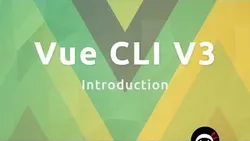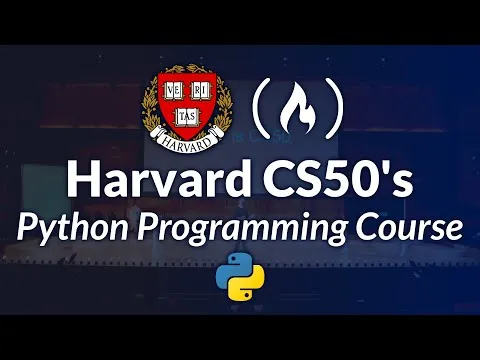
Java Programming Online Course 
This online course provides students with the opportunity to learn the fundamentals of Java programming, from object-oriented coding basics to advanced techniques and application deployment. With the Java Programming Nanodegree, students can gain the skills necessary to become proficient in Java programming. ▼
ADVERTISEMENT
Course Feature
![]() Cost:
Cost:
Paid
![]() Provider:
Provider:
Udacity
![]() Certificate:
Certificate:
No Information
![]() Language:
Language:
English
![]() Start Date:
Start Date:
Self Paced
Course Overview
❗The content presented here is sourced directly from Udacity platform. For comprehensive course details, including enrollment information, simply click on the 'Go to class' link on our website.
Updated in [March 06th, 2023]
This Java Programming Online Course provides an introduction to the Java programming language. Students will learn the fundamentals of Java, including keywords, variables, casting, truncation, methods, memory, access modifiers, arrays, and loops. Additionally, students will gain experience creating a Java program in IntelliJ and learn the purpose of Javadoc. By the end of the course, students will have a strong understanding of the Java language and be able to create their own Java programs.
[Applications]
Those who have completed the Java Programming Online Course can apply their knowledge to create Java programs in IntelliJ, create methods, declare variables, and create arrays. They can also use the four different access modifier types, understand the difference between Stack and Heap memory, and create each of the three different loops (While, do While and For) to iterate over an array. Additionally, they can use Javadoc to document their code and apply casting to change the type of a variable into another type.
[Career Paths]
1. Java Developer: Java Developers are responsible for developing and maintaining applications using the Java programming language. They must have a strong understanding of the language and be able to write efficient code. As the demand for Java applications continues to grow, the need for experienced Java Developers is increasing.
2. Java Architect: Java Architects are responsible for designing and developing large-scale applications using the Java programming language. They must have a deep understanding of the language and be able to create efficient and secure applications. As the demand for complex applications increases, the need for experienced Java Architects is also increasing.
3. Java Web Developer: Java Web Developers are responsible for developing and maintaining web applications using the Java programming language. They must have a strong understanding of the language and be able to create efficient and secure web applications. As the demand for web applications continues to grow, the need for experienced Java Web Developers is increasing.
4. Java Mobile Developer: Java Mobile Developers are responsible for developing and maintaining mobile applications using the Java programming language. They must have a strong understanding of the language and be able to create efficient and secure mobile applications. As the demand for mobile applications continues to grow, the need for experienced Java Mobile Developers is increasing.
[Education Paths]
1. Bachelor of Science in Computer Science: This degree path provides students with a comprehensive understanding of computer science fundamentals, including programming languages, software engineering, computer architecture, and operating systems. Students will also learn about the latest trends in computer science, such as artificial intelligence, machine learning, and data science.
2. Bachelor of Science in Software Engineering: This degree path focuses on the development of software applications and systems. Students will learn about software design, development, testing, and maintenance. They will also gain an understanding of the principles of software engineering, such as software architecture, software project management, and software quality assurance.
3. Master of Science in Computer Science: This degree path provides students with an advanced understanding of computer science topics, such as algorithms, data structures, computer networks, and distributed systems. Students will also learn about the latest trends in computer science, such as artificial intelligence, machine learning, and data science.
4. Master of Science in Software Engineering: This degree path focuses on the development of software applications and systems. Students will learn about software design, development, testing, and maintenance. They will also gain an understanding of the principles of software engineering, such as software architecture, software project management, and software quality assurance. Additionally, students will learn about the latest trends in software engineering, such as cloud computing, mobile computing, and web development.
Course Syllabus
Explain what an object is and why we use them.
Describe the differences between a class and an object.
Know the parts and syntax for creating a class.
Create different objects from a specific object type.
Describe the purpose of Garbage Collection in Java.
Course Provider

Provider Udacity's Stats at AZClass
This online course offers students the opportunity to learn the fundamentals of Java programming, from object-oriented coding fundamentals to advanced techniques and application deployment. Learners can learn the fundamentals of Java programming from this online course. They will learn about keywords used in Java and how to declare variables. They will also learn the difference between primitive variables and objects, and how to apply casts to change the type of a variable. Learners will also understand what truncation is, why it happens and how to create methods in Java. They will learn the difference between stack and heap memory, and the four different types of access modifiers.
Discussion and Reviews
0.0 (Based on 0 reviews)
Explore Similar Online Courses

Vue CLI 3 Tutorial

Medical Emergencies: CPR Toxicology and Wilderness

RDBMS PostgreSQL

Intro To PostgreSQL Databases With PgAdmin For Beginners

PostgreSQL: Client Applications

Mastering SQL using Postgresql

Database Design and Basic SQL in PostgreSQL

PostgreSQL: Advanced Queries

Spatial SQL with Postgres : A language for geographers

Learn SQL Using PostgreSQL: From Zero to Hero

PostgreSQL Essential Training

Harvard CS50's Introduction to Programming with Python : Full University Course
 Related Categories
Related Categories
 Popular Providers
Popular Providers
Quiz
 Submitted Sucessfully
Submitted Sucessfully
1. What is the difference between Stack and Heap memory?
2. What is casting?
3. What is the purpose of Javadoc?


Start your review of Java Programming Online Course